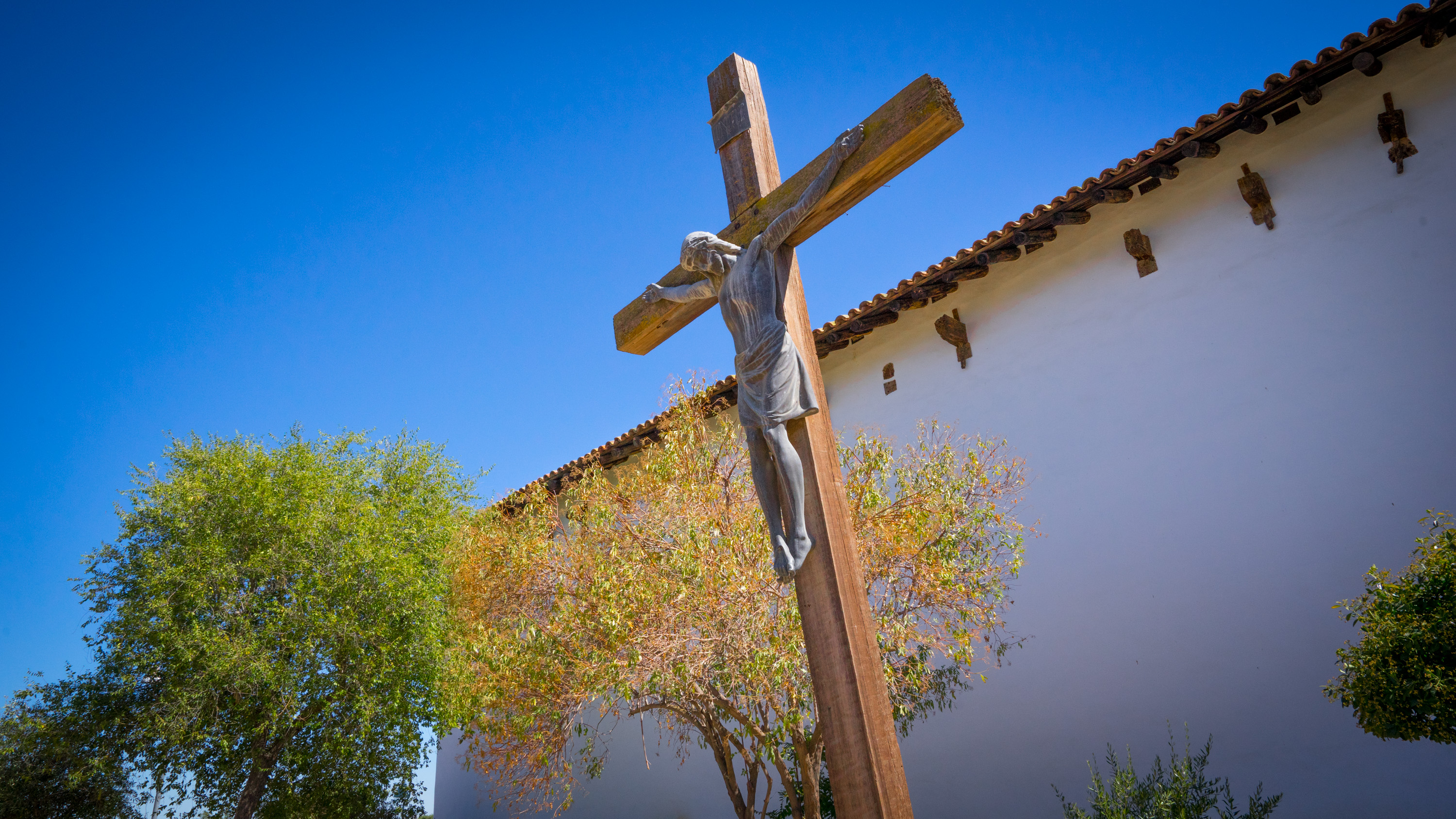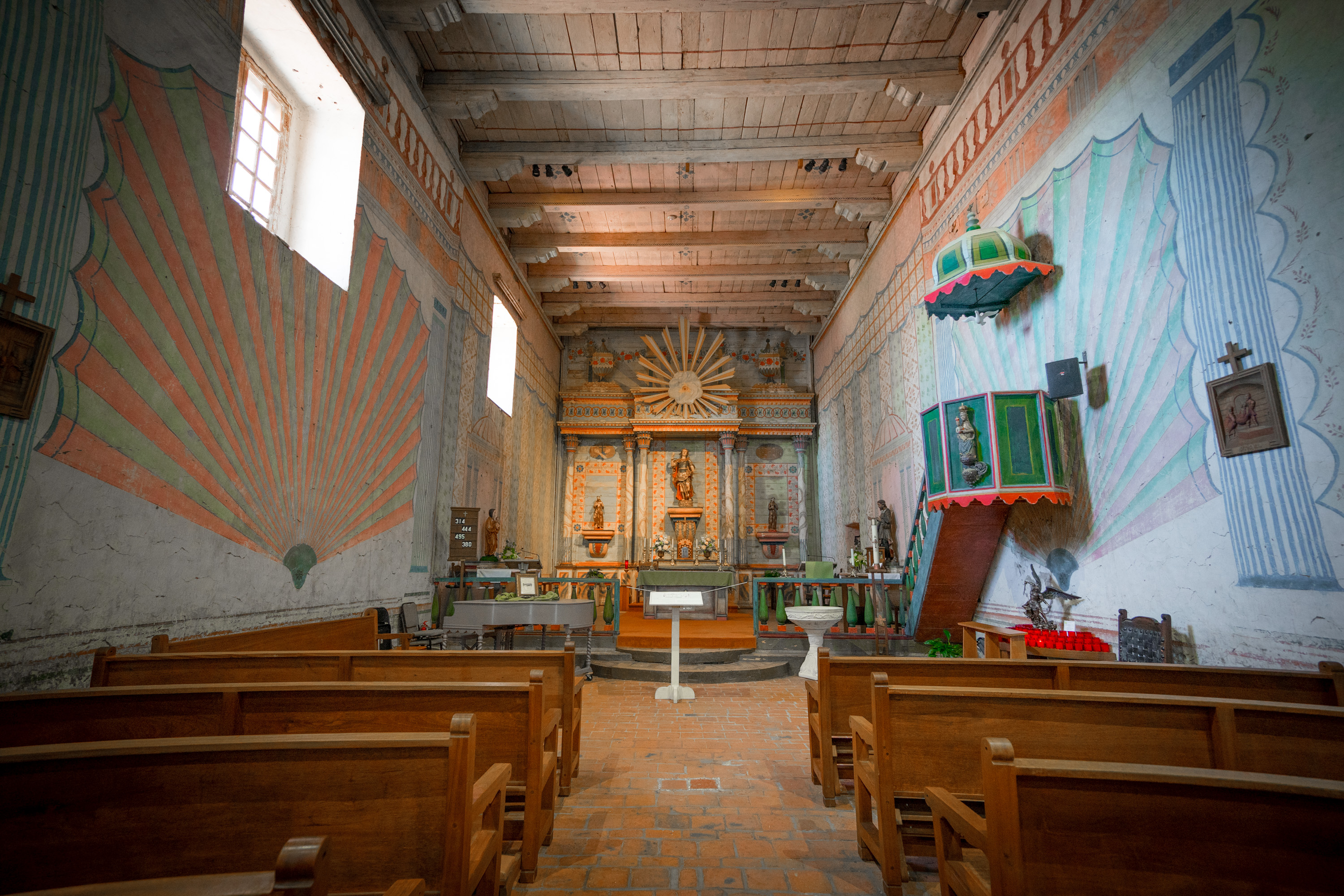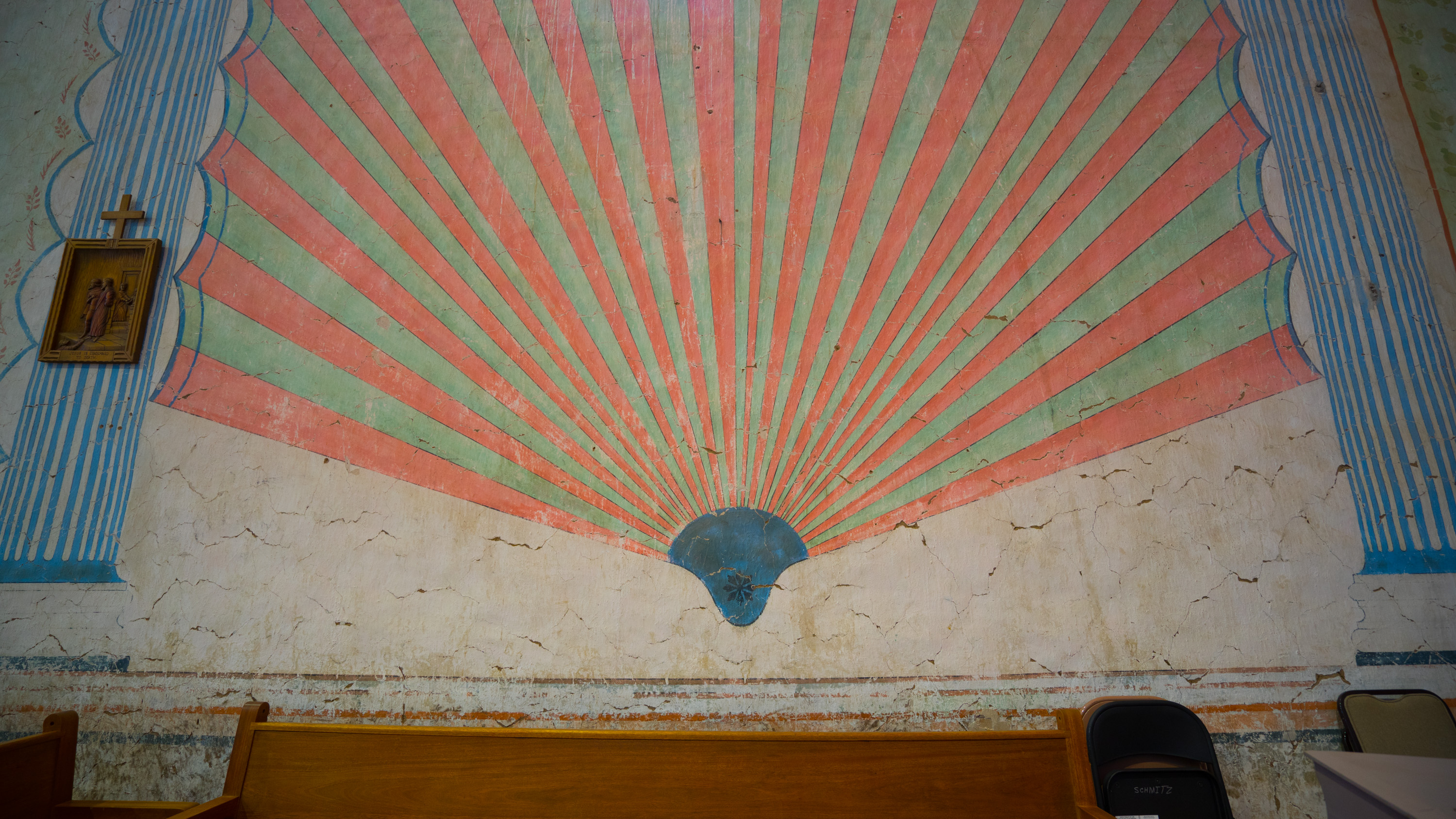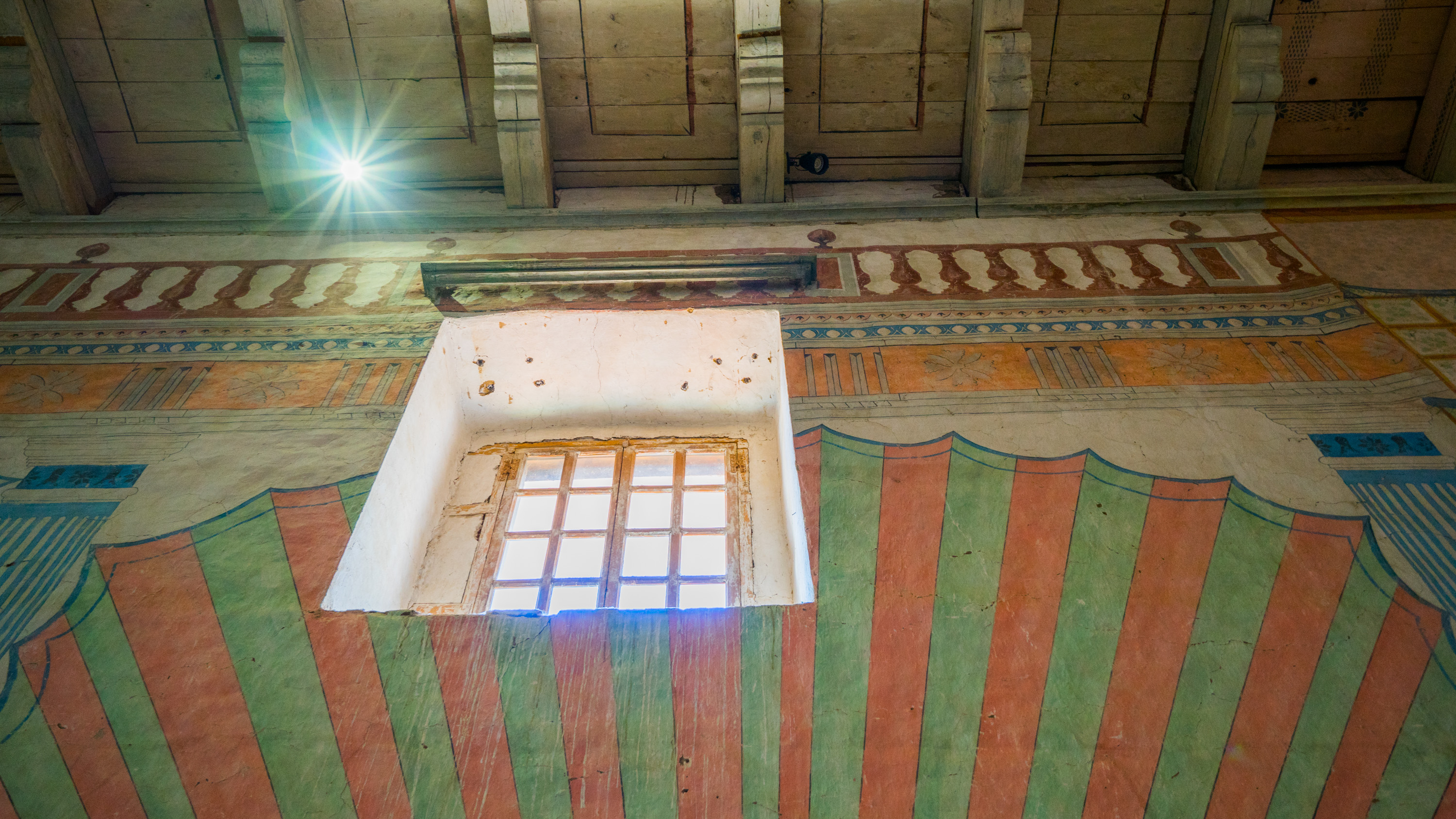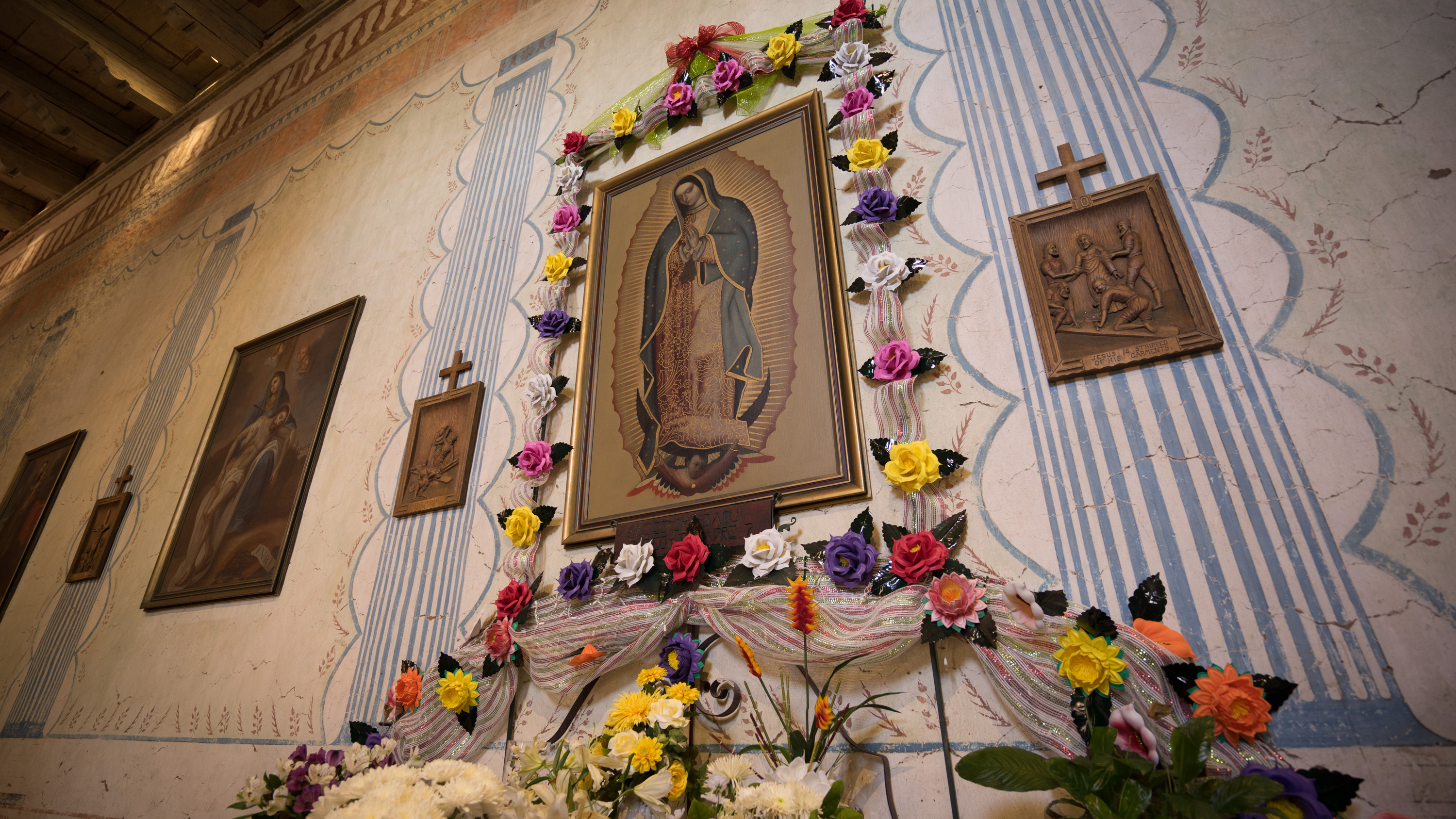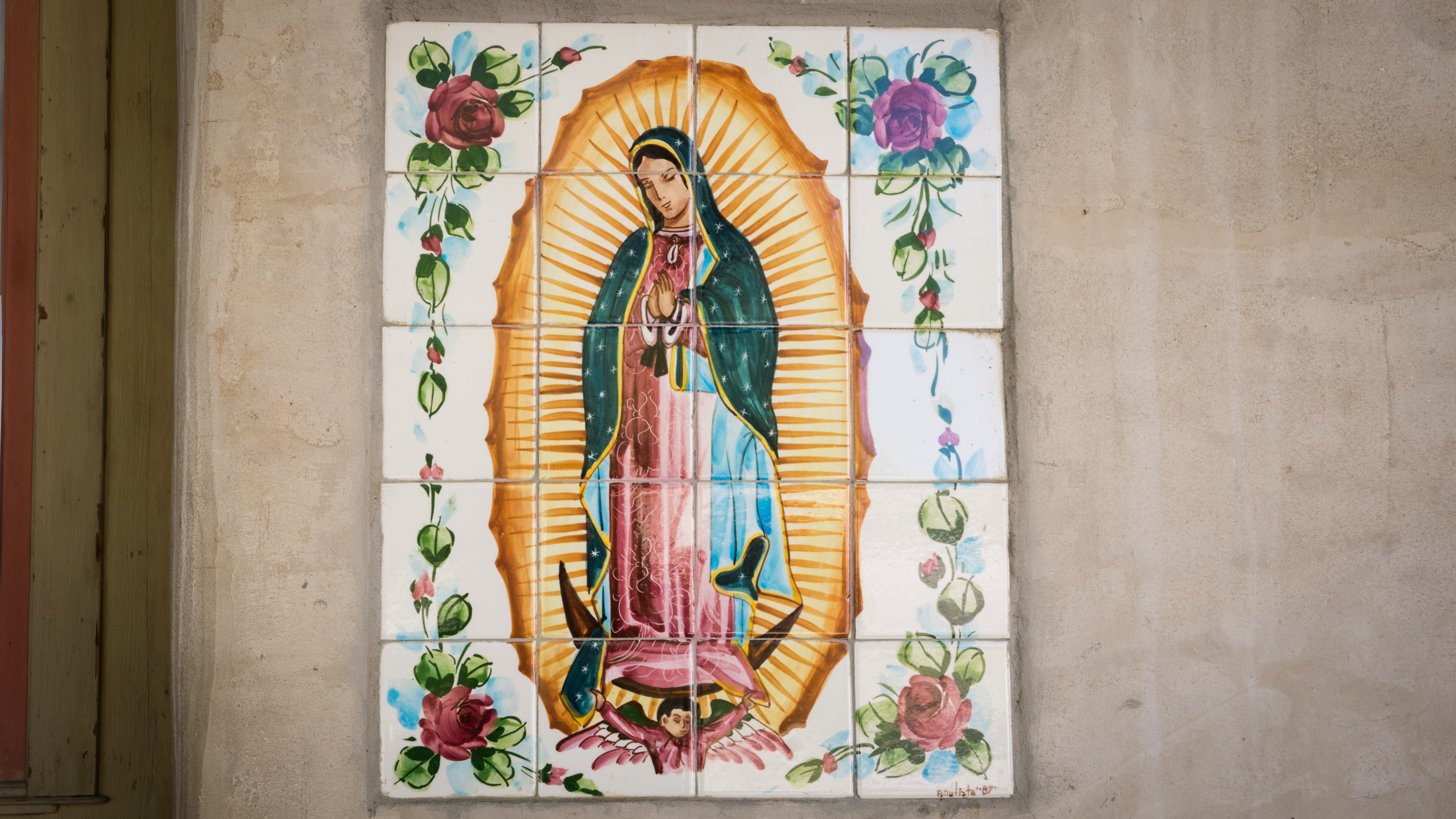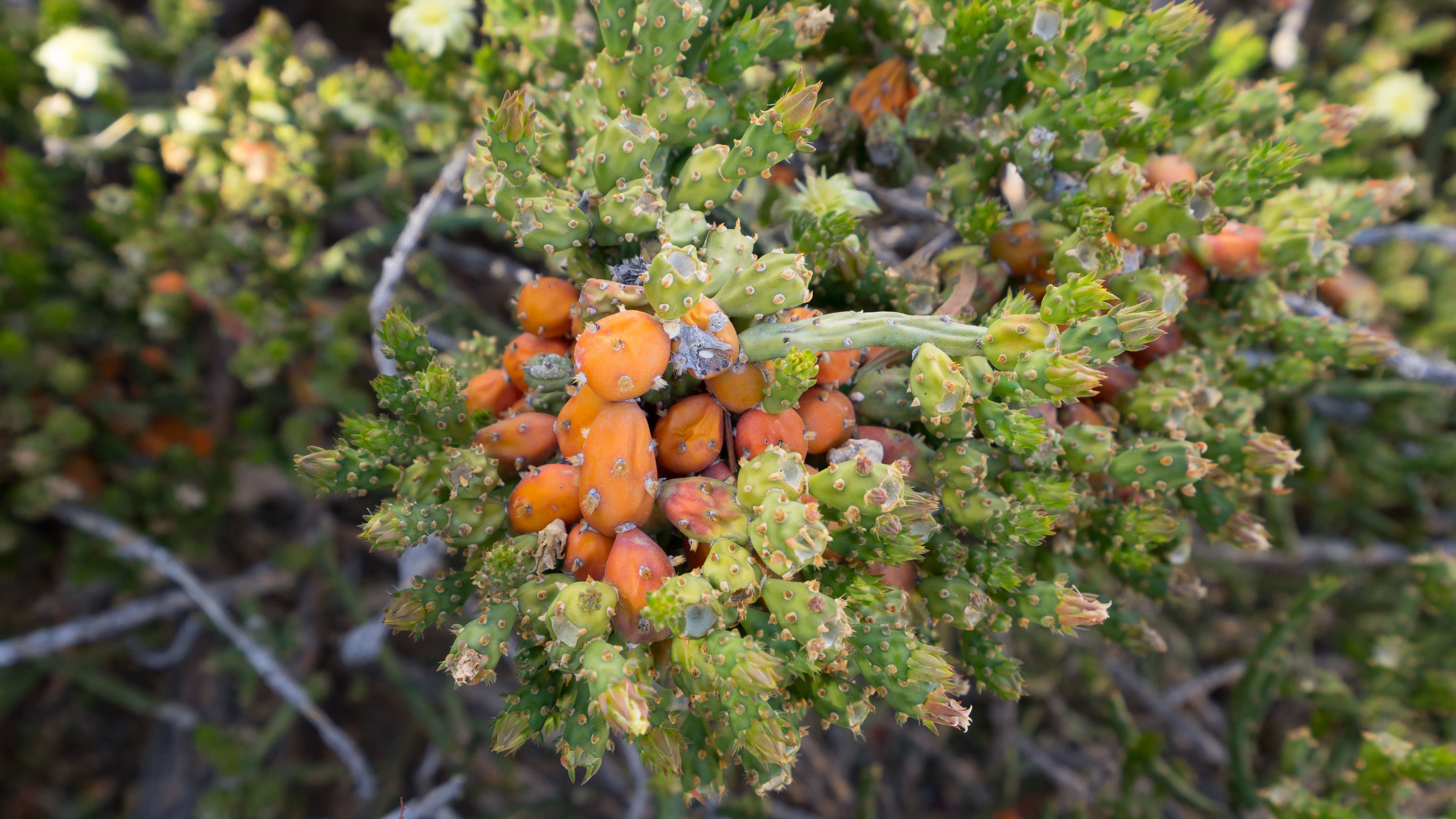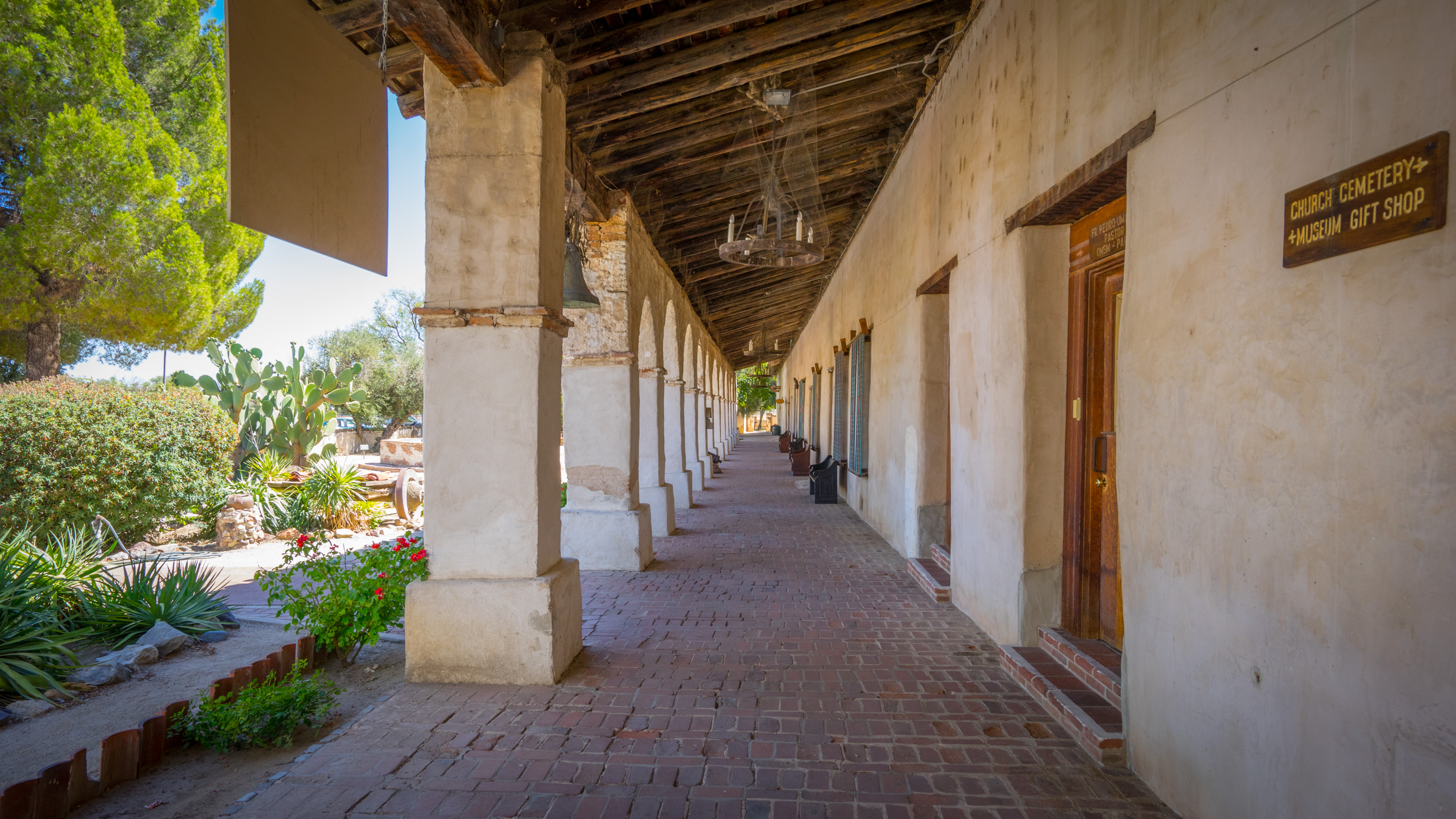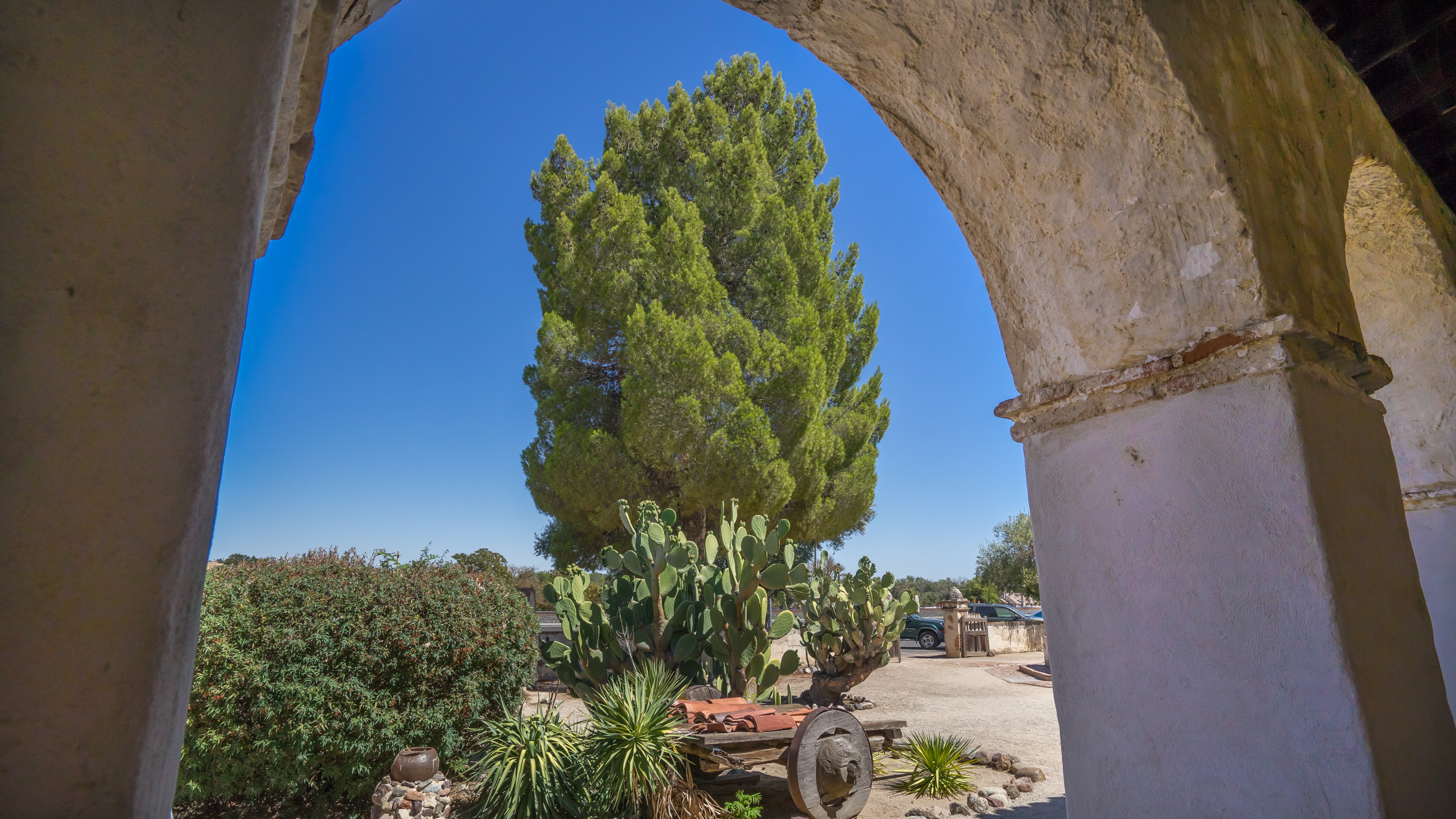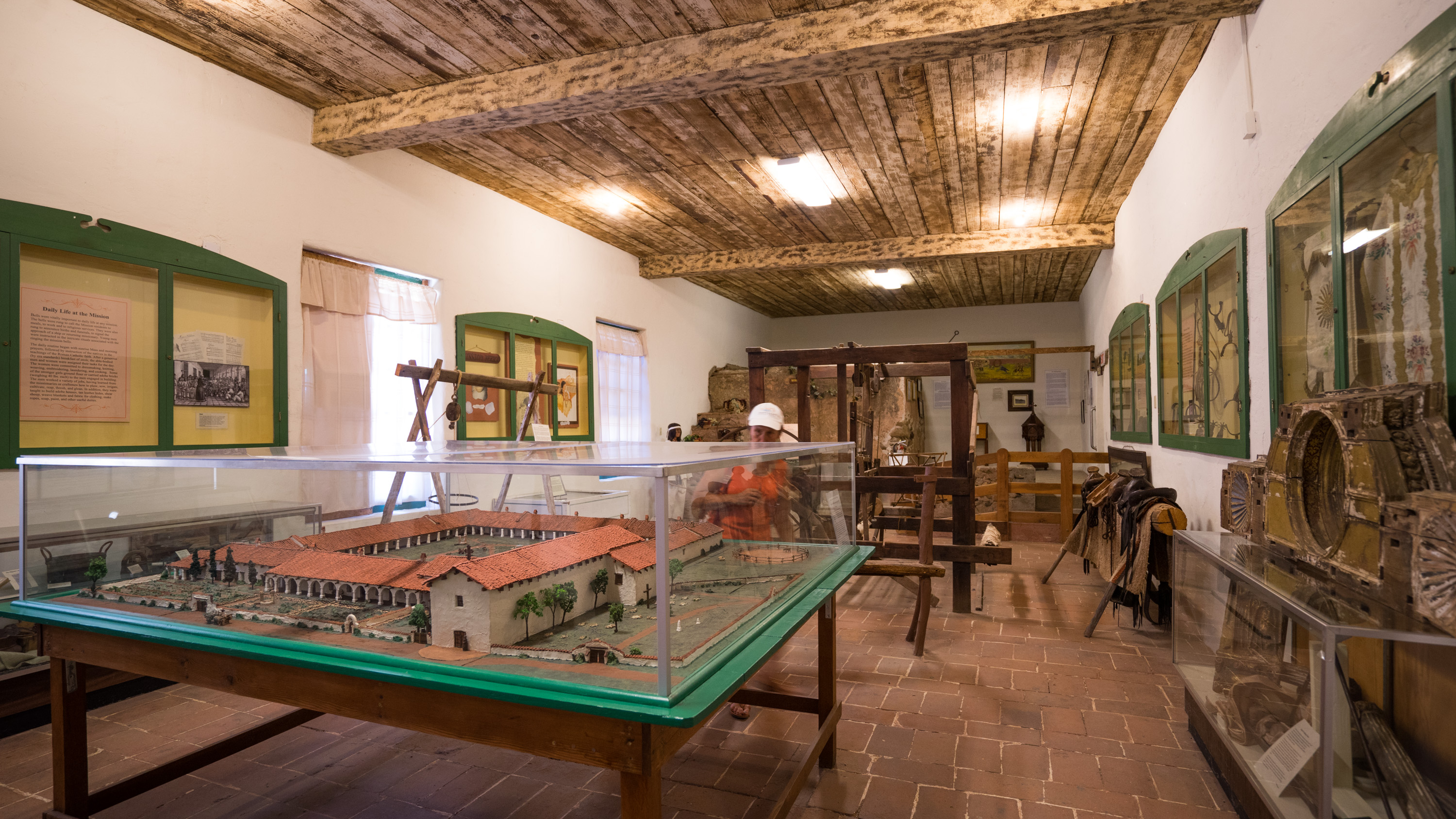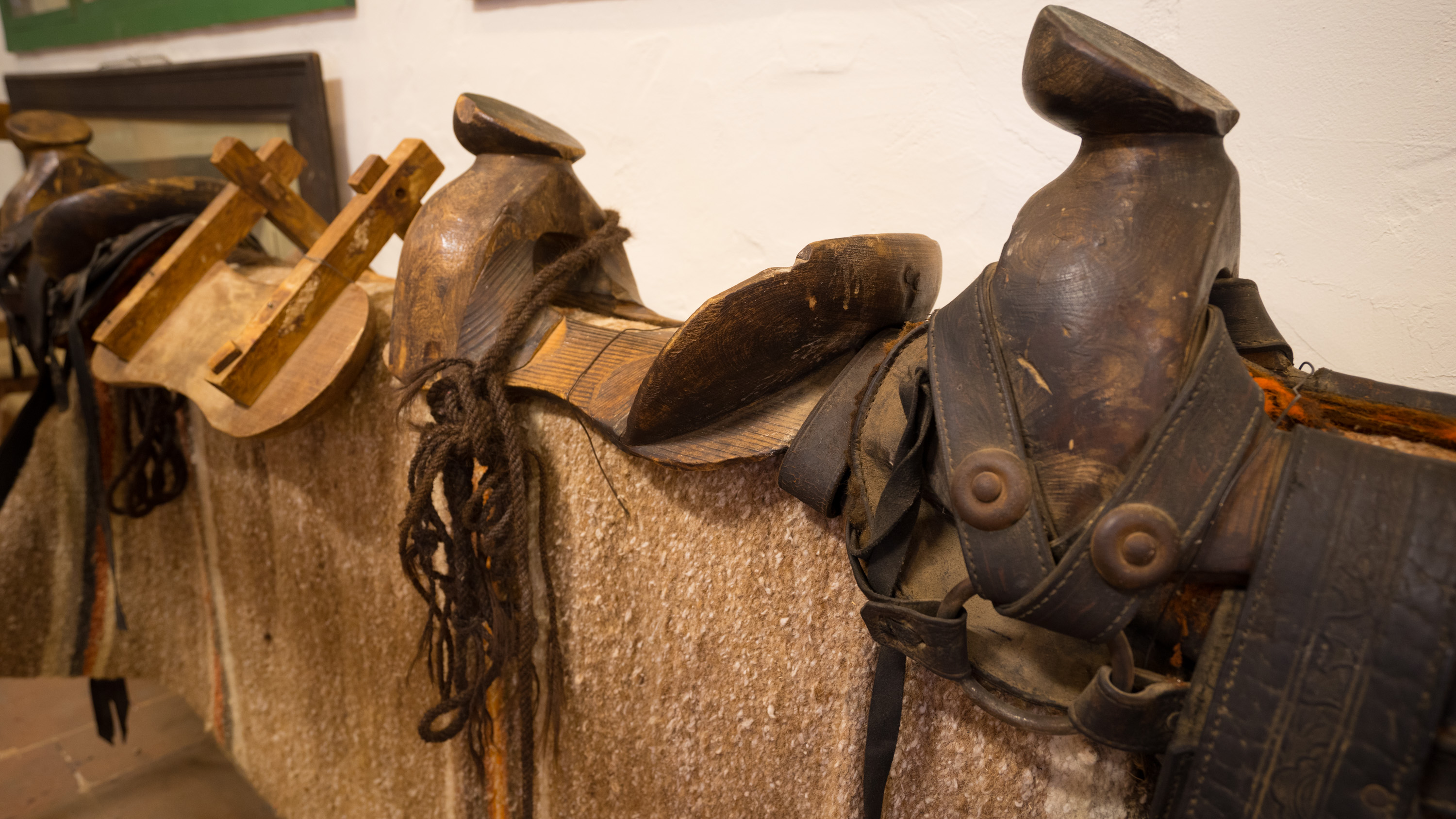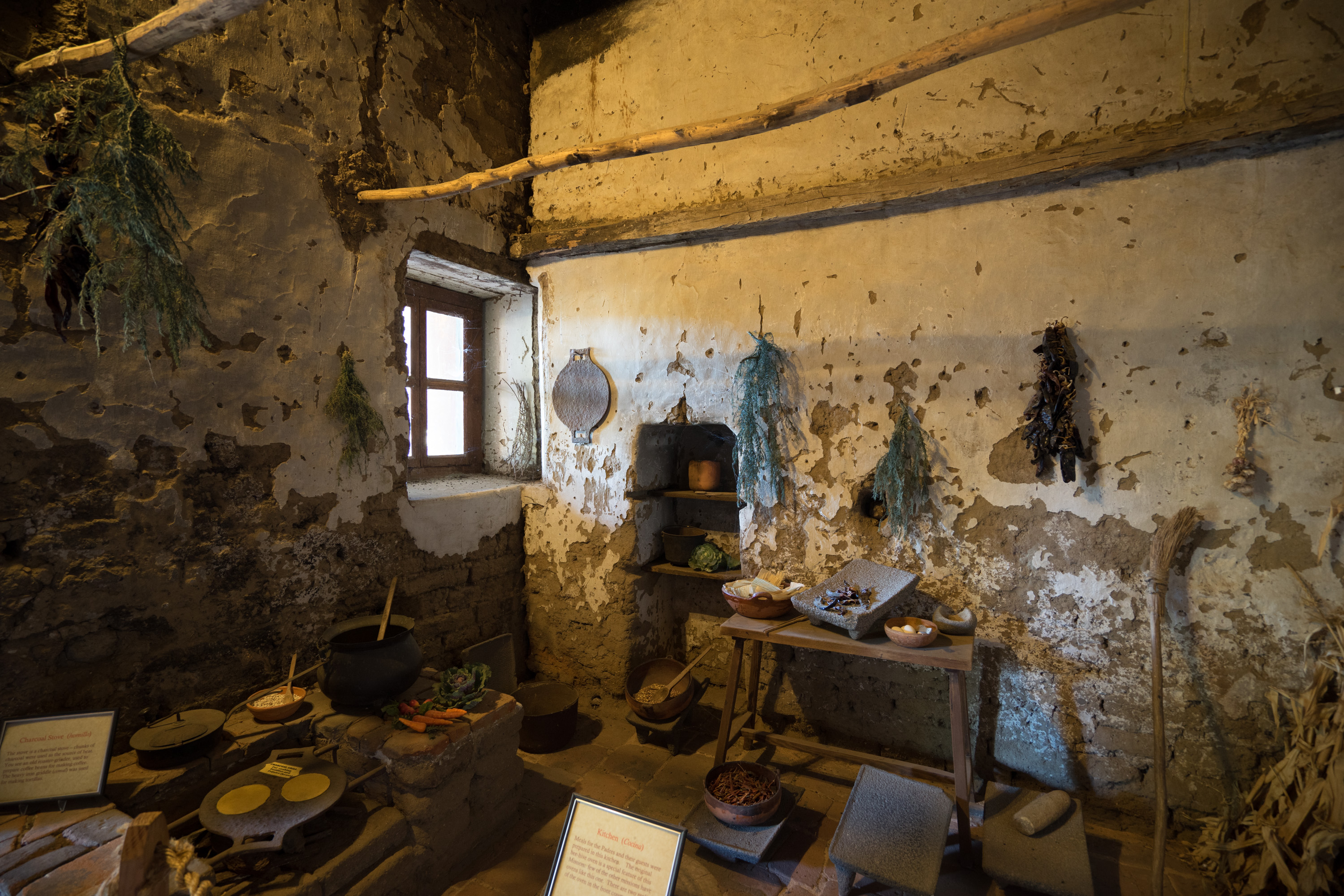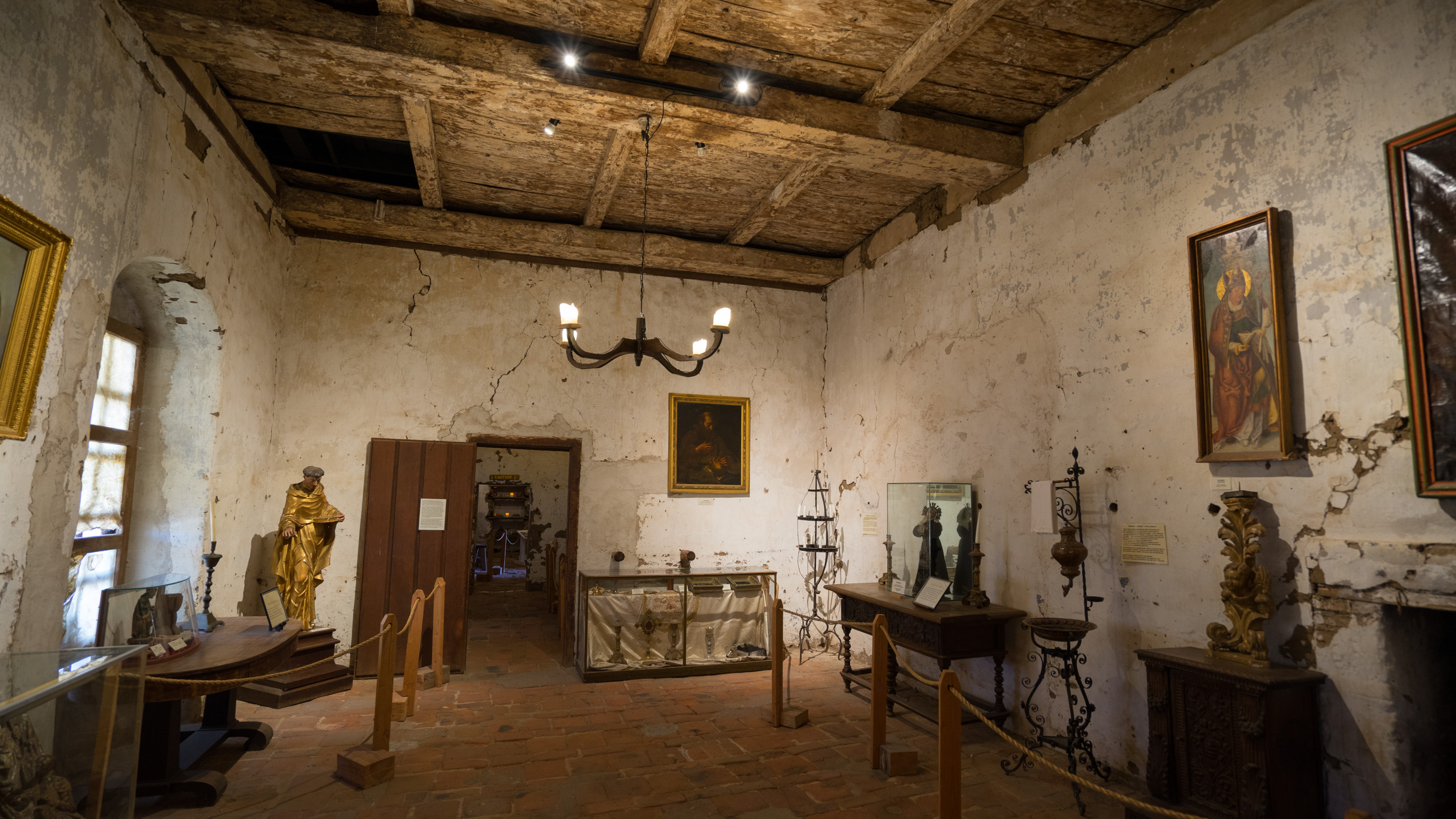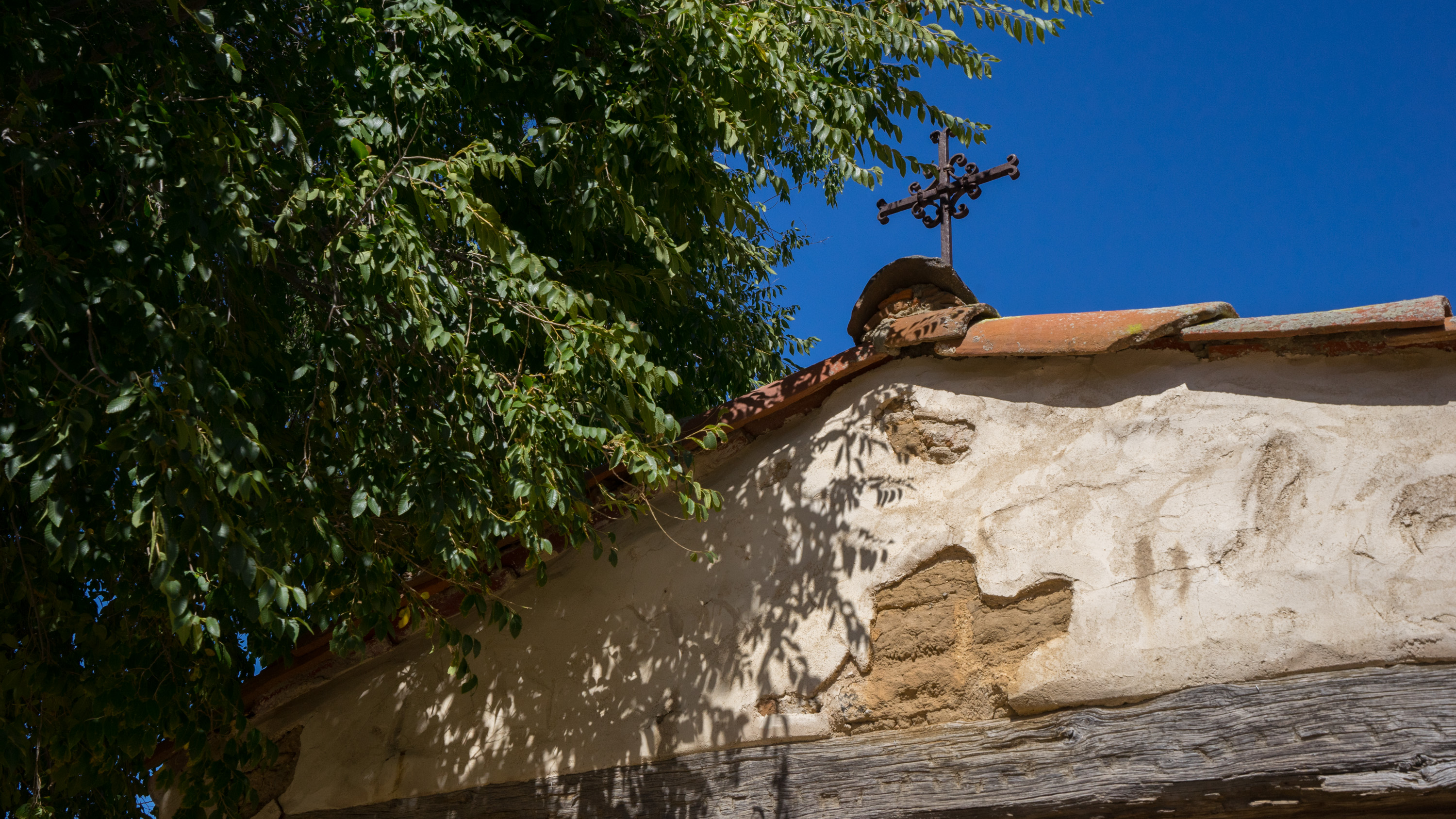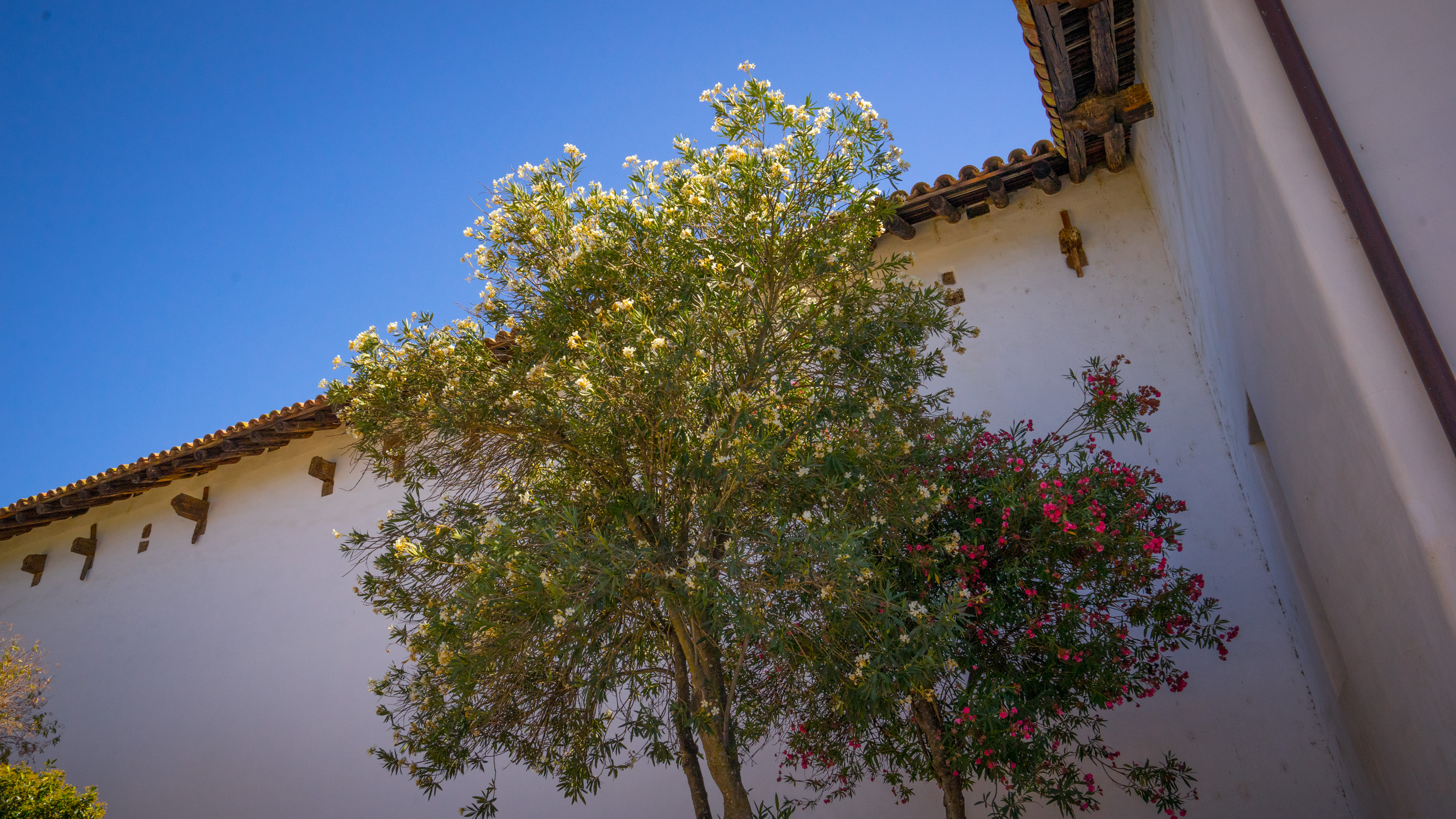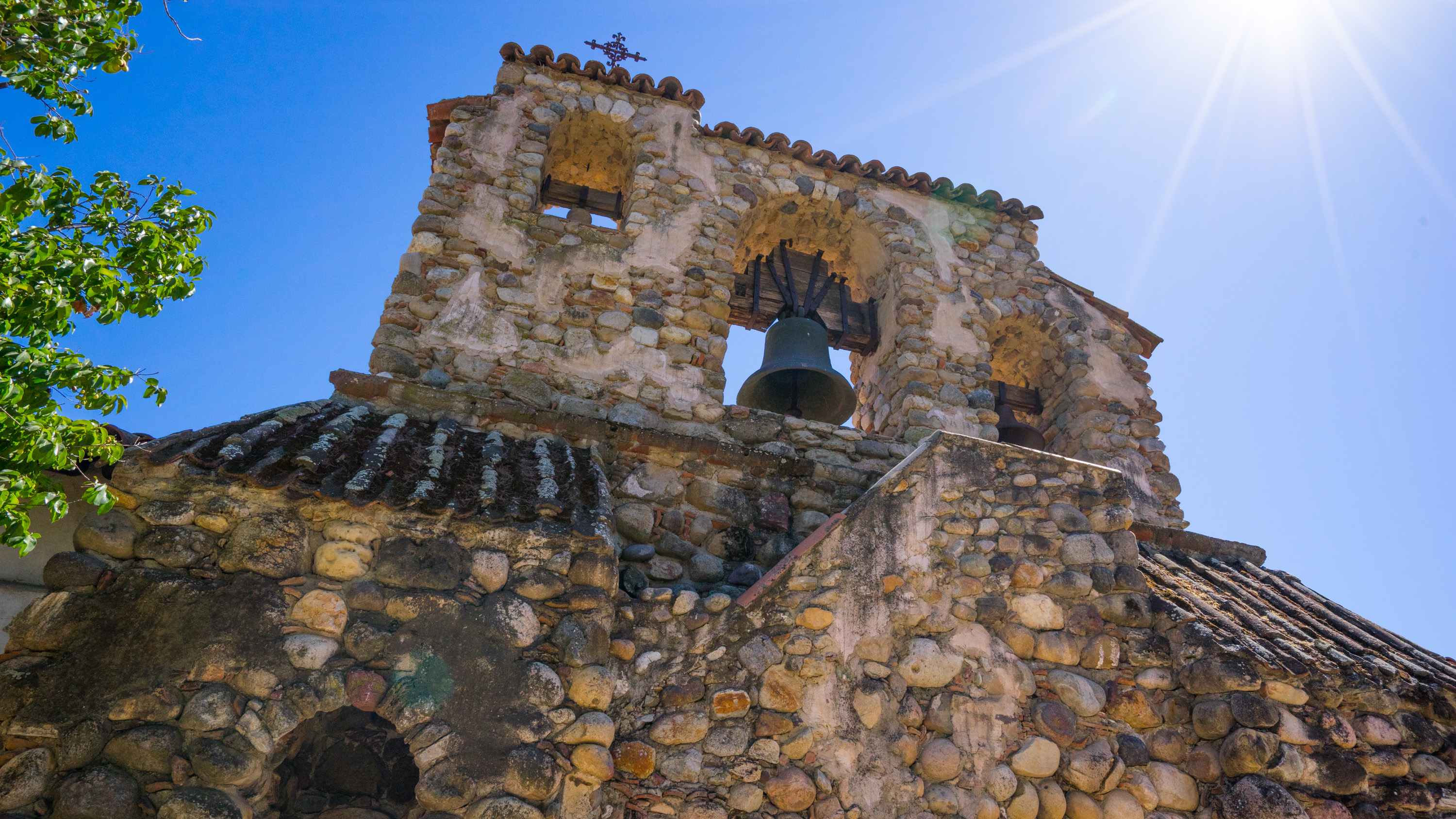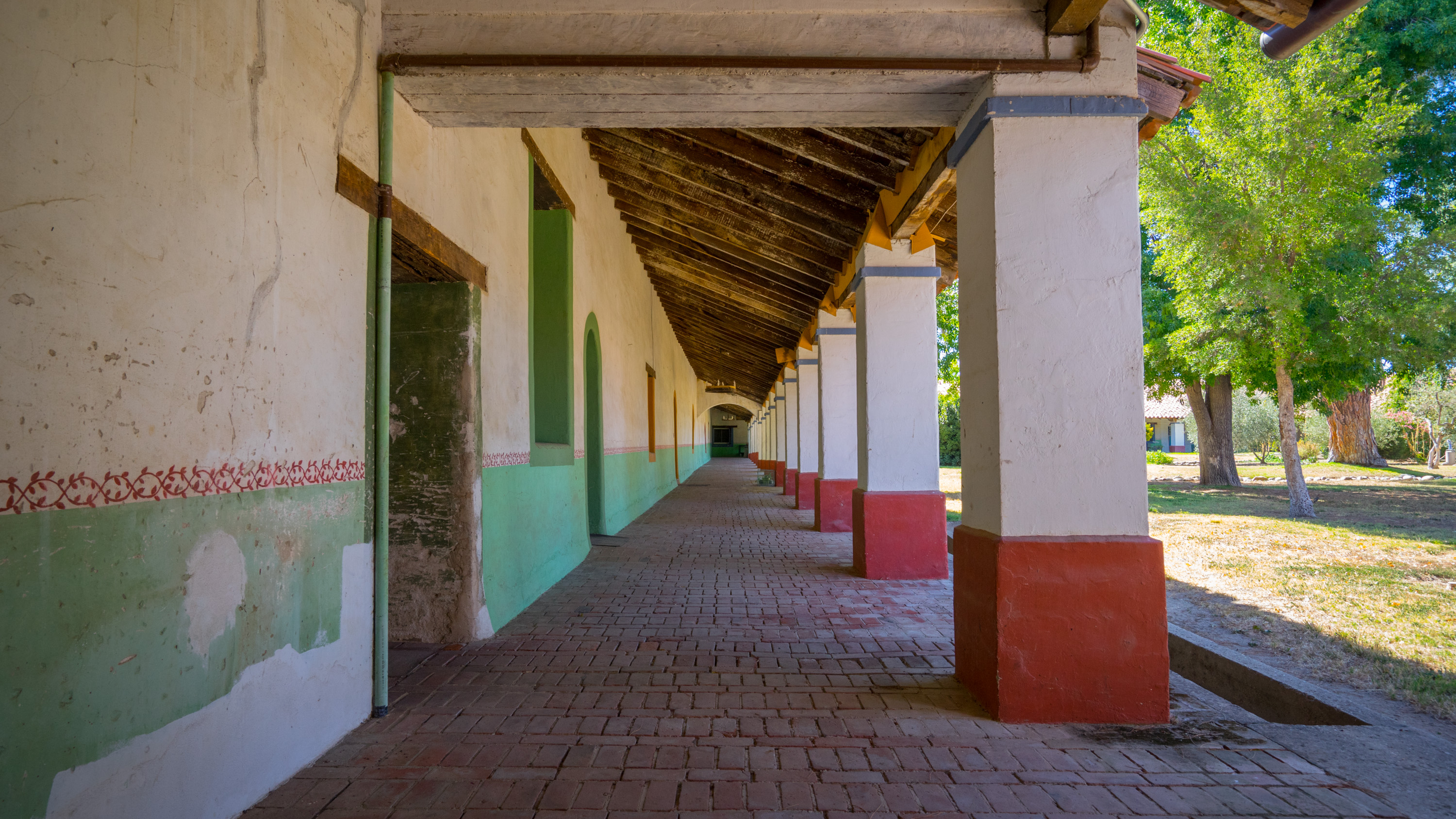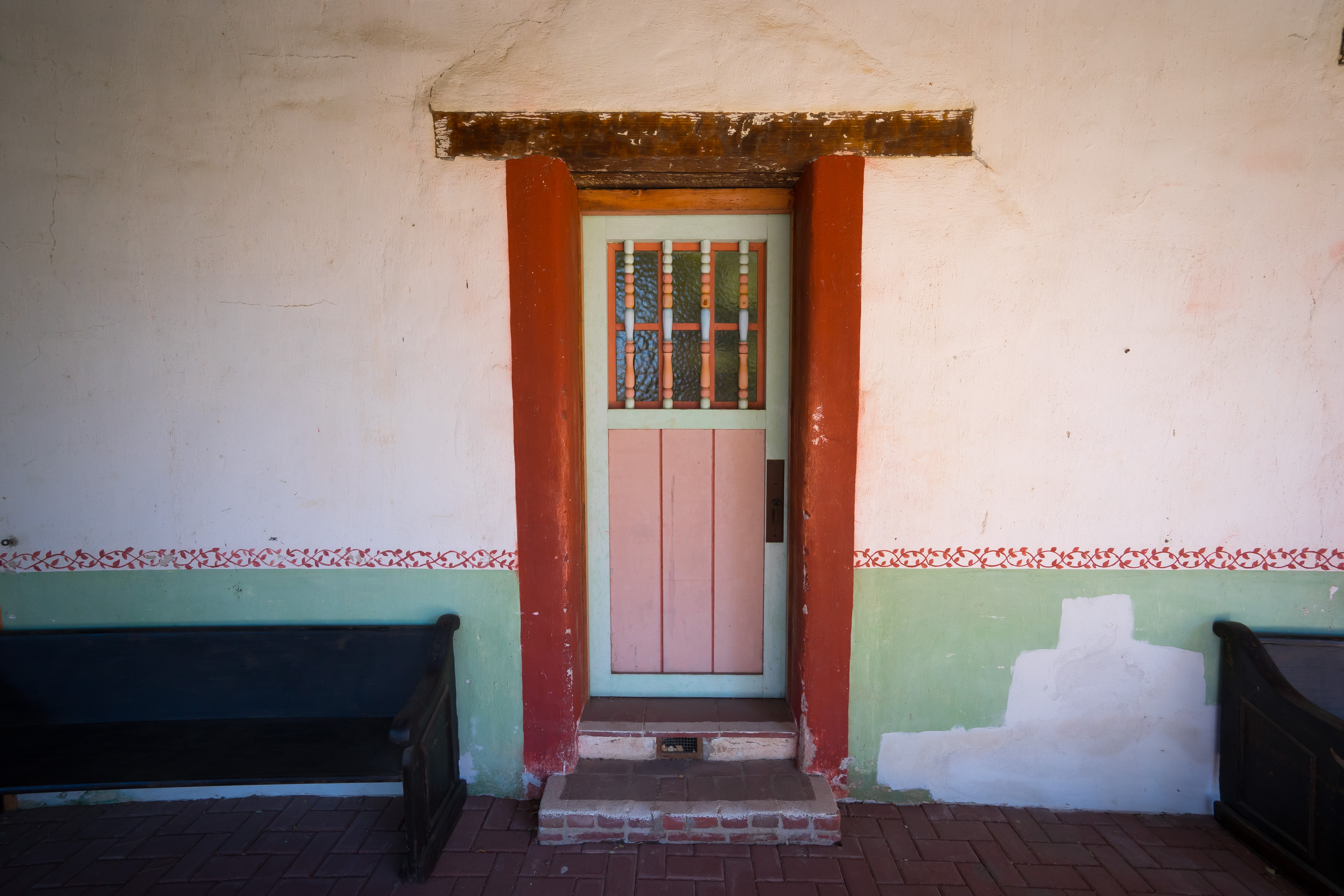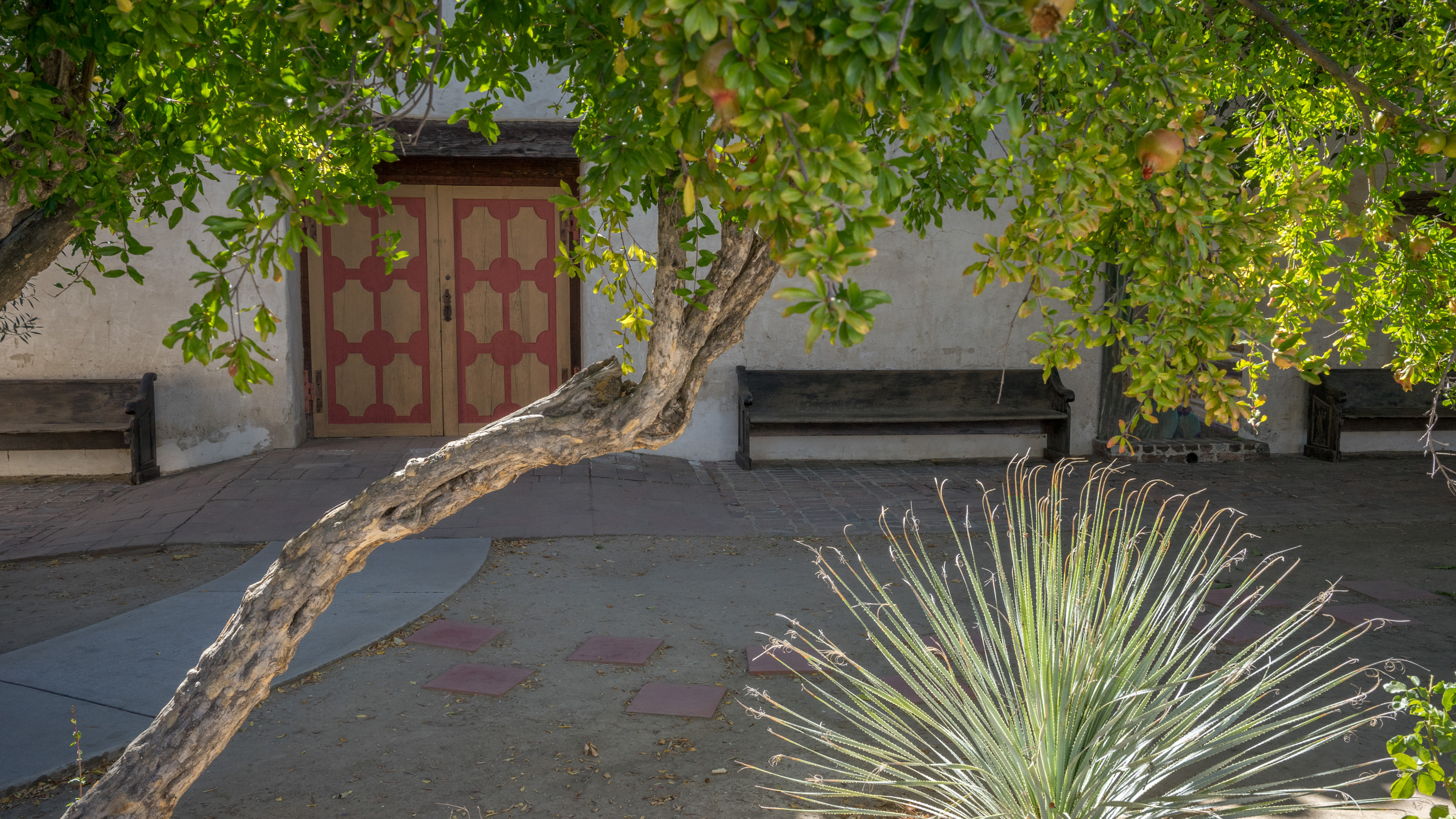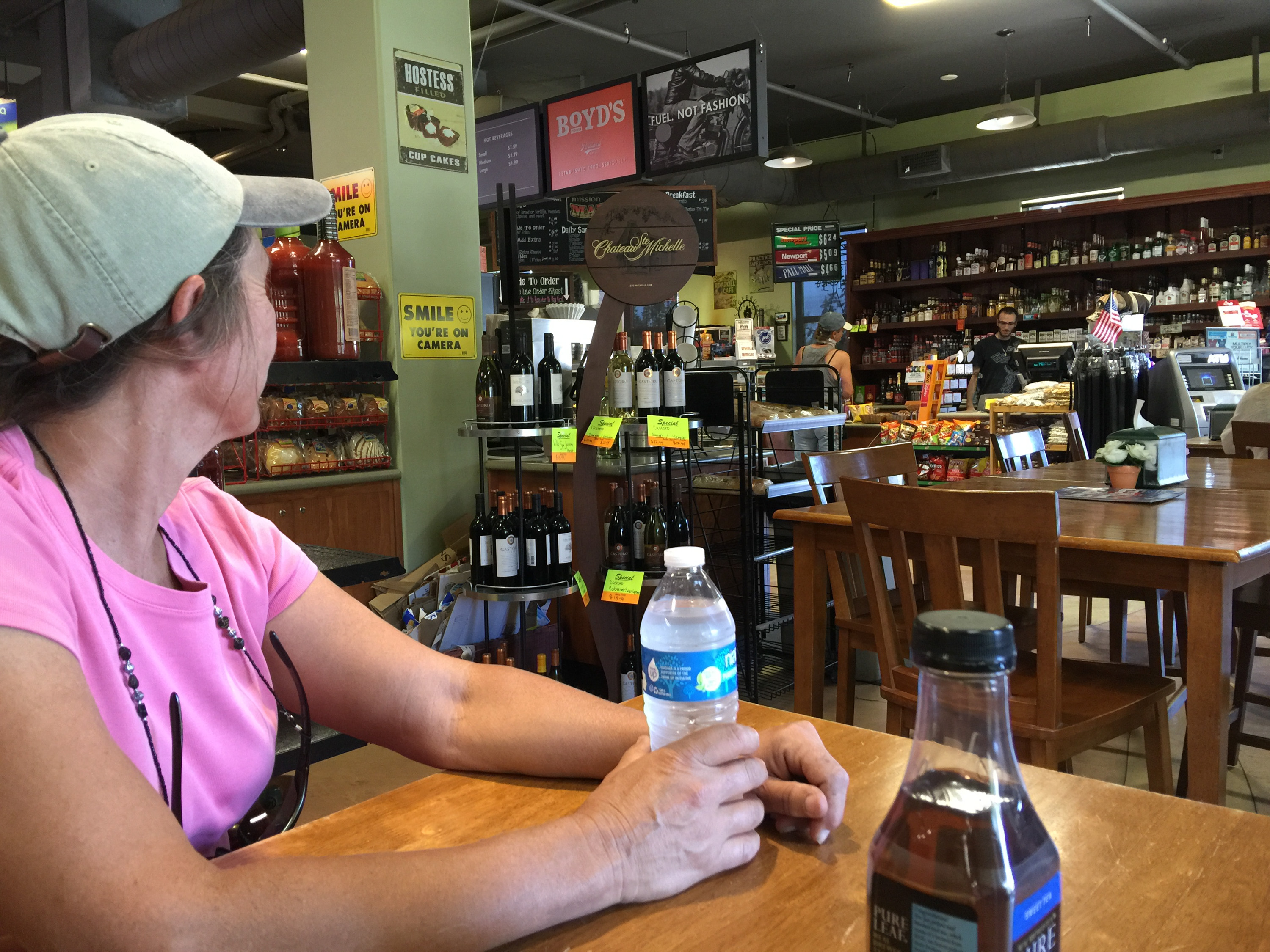It is 104˚ in San Miguel.
Susie and I have stopped at this small outpost in the Salinas Valley after picking up a load of fence panels for the ranch at the Tractor Supply in Paso Robles. Trying to get the most out of these road trips, I worked in a short detour off Hwy 101 to visit the Mission San Miguel Archàngel.
I try and limit these posts to my experiences in the natural world, but visits to the California missions are an exception. That’s because both experiences, walking under the redwood canopy or into these quiet sanctuaries, surround you with a quiet presence that almost insists that you take notice. You’re in the presence of something special, so slow down, look up and take it all in.
The relief of leaving the heat behind as you enter the cool shadows of the chapel amplifies the sensation of crossing into something very different from the familiar and comfortable spaces of our daily routines.
My eyes adjust to reveal thick timbers 40 feet over my head, walls painted like frescoes with turquoise and gold, and the rows of simple wooden benches that draw your gaze to the intricate beauty of the sanctuary; a blaze of color embracing the figure of Saint Michael the Archangel outfitted with chest plate and sword, braced to defend the faithful from Satan.
The entire scene is crowned by a fixture of blazing sunlight centered by the all-seeing eye of God. I need to behave myself. I am being watched.
I instinctively speak in a quieter voice. There’s so much to see, or better, absorb in just the chapel alone.
Every flat surface, from door frames to timbers on the ceiling, are adorned with geometric patterns created from a remarkable pallet of colors, the once vibrant pigments now subdued by time into more gentle pastels.
The decorations you see are the original artistry of native Salinan locals, created under the direction of Esteban Munras almost 200 years ago. Many agree that these are the best preserved original artwork in all of the California missions.
The quiet symmetry of the colors and patterns, the spare wooden benches and bare tile floors stand in deliberate contrast to the explosion of color of the sanctuary at the front of the long hall. The entire scene kindles a certain reverence… from even the most cynical among us.
Exiting the chapel and its cool, six-foot thick walls put us back in the bright midsummer heat of the Salinas valley.
The Mission grounds, which are sandwiched between the 101 freeway and the Union Pacific railroad, offer up examples of period architecture, a dry and dusty cemetery, a dry and dusty garden and a modest but well-curated museum of artifacts detailing the 200 year history of the mission and its people.
We spend some time in the museum, especially enjoying the old saddles, a display of native baskets and historical paintings.
To its credit, the mission grounds also display historical markers acknowledging the church’s troubled relationship with the original inhabitants of this valley, the Salinian indians, who are now trying to gain tribal recognition from the Bureau of Indian Affairs. Church records indicate some 2,200 ‘Christianized’ indians are buried in and around the mission grounds.
That somber note somehow subdues the experience, even as I consider the context of the times. Nonetheless, I leave the mission enlightened not only by its sublime beauty but by a fuller understanding of its history as well.
As we return to the truck loaded with metal fencing and accelerate to the 101, I become aware that I’m having to recompress not only to freeway speed, but to the lives we’ve chosen to live as well.
Leaving the cool, quiet reverence of the chapel behind, I smile and quietly think that maybe there’s more to it all then a truck full of fencing and cruise control. Maybe there’s more. A detour indeed.
Mission accomplished.
Photo factor: (+) First of all, please be considerate of people who are in the chapel in prayer; your photos and flash can wait just a few minutes. In fact, don’t use a flash because it’s so obnoxious. If you can’t figure out how to shut the flash off, just put your finger over the strobe. The photo ops are pretty obvious. It can be dark, so I brought a tripod, cranked up the iso and went with longer exposures. Then it’s the exact opposite outside. Big bright light, especially in midday.
It’s really about architectural details, so be a little aggressive with your compositions. Don’t let your ‘mind’s eye’ fool you. For example, if you like the colors on a door, make sure you fill the viewfinder all the way with that door. Force your viewers to enjoy the door and its colors, don’t just let it be a large hole in a wall that happens to be painted. On the shot I took of the front of the mission, I waited a little while for the sun to move so I could put myself just inside the shadow while still being to get the whole front of the church and some sky into the shot.
Food stop: Check out the Mission Market and Deli (of course) just down Mission Street (of course). We picked up a couple of good sandwiches before we headed back on the road.

